Don't wanna be here? Send us removal request.
Text
Stab Machines and the Sharp Objects We Load Them With
Seen here is the most common type of tattoo machine, this coil machine has 3 main parts, the coil assembly, the tube assembles, and the tip. The coils create a magnetic field which moves the armature bar towards coils, when the armature bar comes into contact with the coils, the circuit is shorted, allowing the back spring to move the bar upwards, this in turn allows the magnets to reactivate and pull the bar downwards again. This movement creates the signature buzz of a tattoo gun. These coil guns can be broken down into two different variations, these are shader machines, which usually have a less aggressive buzz and are gentler, this allows for shading to be done gradually. The second type of machine is a line machine, these usually have a more aggressive buzz and allow for lines to be done in a single pass.

Another less common type of tattoo machine is a rotary tattoo machine; these machines have a rotating wheel which is either used to move the needle back and forth directly or connects to an armature bar which moves the needle back and forth. (Laura)

Displayed below the tattoo machines is a diagram of different needles and what they do, while this diagram shows the different patterns the needles points come in, it does not show the different options for taper which influence the way that ink is transferred into the skin, each needle comes prepackaged in a sterile plastic container, while it is preventable with sterilization techniques, the best way to prevent infecting a tattoo is by using a new needle for each tattoo. (DTS)

Laura, informatio center. “Coil vs. Rotary Tattoo Machines.” Painfulpleasures Inc, 7 Nov. 2019, info.painfulpleasures.com/help-center/information-center/coil-vs-rotary-tattoo-machines.
DTS, Posted byBarber. “Tattoo Needle Guide: Needle Types & Sizes.” Barber DTS, 25 Feb. 2020, www.barberdts.com/uk/advice-hub/tattoo-needle-guide/.
0 notes
Text
Tattoos On Prisoners
One of the first large scale uses of prison tattoos was that of the roman empire, when imprisoned, they would be tattooed with their crimes, these designs would be done on the forehead and the backs of their hands. This was done to prevent criminals from hiding their crimes from public view, the methods for removing these tattoos at the time were quite painful and usually left large scars. (Jaafari) A similar method of punishment was used by the Nazis in concentration camps. During the first few months of taking in prisoners, tattoo stamps such as these would be used to give each prisoner a serial number. This later switched to a normal tattoo gun as the stamps proved to be difficult to use. (DC) The reasons for tattooing Jewish prisoners was a punishment. A line in the Torah translates to, “You shall not make gashes in your flesh for the dead, or incise any marks on yourselves: I am the Lord” (staff) this shows us the intention of the Nazis was to dehumanize the inmates upon arrival by showing them how little their beliefs are valued and then reducing them to numbers as they are admitted to concentration camps. (Hopmas)

While tattooing prisoners at one point was a punishment, modern prison tattoos are now considered a pleasure. Starting in the 1970s, modern prison tattoos became much more detailed due to the introduction of small electric motors in consumer electronics such as cassette tape players, this allowed for prisoners to construct rotary tattoo machines like the one shown here. These are still used for prison tattoos; ink can be made with the soot collected from burning petroleum products such as oil or plastic chess pieces. Prison tattoos that are for personal display of personality may be things such as memories from the outside world, the name of a loved one as a gift to them, or a piece designed to reflect a cornerstone of their personality. (Jaafari)
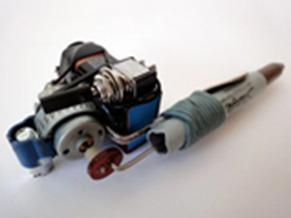
DC, United States Holocaust Memorial Museum, Washington. “Assignment of Camp Serial Numbers and the Introduction of Tattooing.” United States Holocaust Memorial Museum, United States Holocaust Memorial Museum, 9 Dec. 2019, encyclopedia.ushmm.org/content/en/article/tattoos-and-numbers-the-system-of-identifying-prisoners-at-auschwitz.
hopmas, bob. “Concentration Camps: Tattoos.” WW2 Gravestone, 7 Aug. 2015, ww2gravestone.com/concentration-camps-tattoos/.
Jaafari, Joseph Darius. “The Underground Art of Prison Tattoos.” The Marshall Project, The Marshall Project, 7 June 2019, www.themarshallproject.org/2019/06/07/the-underground-art-of-prison-tattoos.
Miller, Daniel. “Evil-Looking Implements Used by Auschwitz Guards to Tattoo Prisoners.” Daily Mail Online, Associated Newspapers, 11 Mar. 2014, www.dailymail.co.uk/news/article-2578422/The-evil-looking-implements-used-Auschwitz-guards-tattoo-numbers-prisoners-held-Nazi-death-camp.html.
Staff, Bibble Tools. “Top Bible Verses About Tattoos - Helpful Scriptures.” Bible Study Tools, 24 Feb. 2015, www.biblestudytools.com/topical-verses/bible-verses-about-tattoos/.
0 notes
Text
Tattoos of the Future: Original Designs
Emergency Health Information:

This tattoo is designed to be used by medical professionals when the patient is unable to give them important medical information, if for example they’re unconscious or have memory loss. The tattoo consists of three parts, the barcode, the organ donor status, and blood type. The barcode is to be scanned by a medical professional at which point it will list things such as name, age, emergency contacts, and preexisting conditions once a username and passcode are entered by the medical professional. The organ donor status is indicated by whether or not there is a slash through the heart. This and the blood type are to act as a failsafe if for some reason the barcode fails so the doctor will still have an improved chance of saving the person’s life or preventing deterioration of the patient’s health.
Company Gang Tattoos:

This tattoo applies the concept of gang tattoos to more corporate employment. Conceptually, the tattoo would be done with a special ink and the company’s logo upon signing a contract with the company so benefits derived from this employment would only be available to those with the correct ink. The tattoo indicates loyalty to the company and its permanence creates a level of importance around employment that follow the societal trend of work and money over family. This could encourage a dystopian future in which a company becomes your family and highest priority and so they have total control over your life.
Wedding Rings:

Tattooed wedding rings again use the permanence of the tattoo as a symbol of commitment that aligns with the connotations of marriage. The design could be altered so that a new band would be tattooed every year or in some other time interval to further symbolize commitment and a healthy marriage. Logistically, tattooed wedding rings would be better than diamond one’s as they’re much cheaper and also harder to lose especially for those with jobs requiring the frequent use of ones hands. Furthermore, the physical pain creates a deeper bond between the couple and emphasizes the commitment to the union.
Breathing Exercise Guide:
Breathing exercises are commonly used to aid with stress and anxiety and are very useful to many with mental illnesses. These are intended to regulate breathing in a way that calms the body and it turn forces the mind to calm. In the exercise presented above, one breathes in for 4 seconds, holds their breath for 7 seconds, then exhales for 8 seconds. The user would follow the numbers with their eyes until they reach a boxed number at which point, they’d return to the beginning and follow the next stage until the next box is reached. Having a visual to focus on aids in calming the user and having the exercise tattooed can remind the user to try calming down when they begin to panic.

Color-in Mandala:
This tattoo takes the current trend of mandala tattoos and alters them so shapes are more defined so they can be colored in. Similar to the breathing exercise tattoo, the act of coloring can be very calming and additionally can be used by people with self-harm issues to prevent them from self-harming. Furthermore, mandalas don’t typically have colors associated them as other things for example and animal, because of this the user has more creative freedom. One drawback of this design is that it would be less functional for people with dark skin as it’s harder to find markers that show up on their skin and are nontoxic.

Family Tree:
This tattoo would be a string of characters following either the maternal or paternal line of the family tree beginning with the oldest second to the top and continuing down the spine. At the very top of the spine would be the family character (like a surname) and the following characters would identify the family members (first or middle name). This tattoo is meant to destigmatize the practice in Asia by appealing to values of family and community. The position on the spine emphasizes the family as the literal backbone of the individual. This design doesn’t not account for queer unions or trans individuals however the design can be altered once tattooing accepted by society.

Tattoos as fashion:

These tattoos would use the body as a way to work with or emphasize fashion by mimiking the clothes pattern or colors. This would elevate fashion and more solidly establishes it as an art form. Typically, tattoos would need to be temporary for event like award shows but more permanent tattoos can be used to complement one’s set style and aesthetic.
Reminder List:

Writing reminders on one’s arm is already a semi-popular practice and this tattoo would give it structure. It can be especially useful for people with Alzheimer's or other memory loss where important reminders like “take meds” can be permanently tattooed and less important reminders can be written in pen. This tattoo helps one organize their life and remind them that there’s always things to do and ways to improve.
0 notes
Text
Cosmetic Tattoos
Uses:
Everybody has that one aunt with tattooed eyebrows that are just thin enough to look villainous. What you don’t know is that these expressive relatives are part of the recent movement of tattooed cosmetics. Cosmetic tattoos are typically used to enhance the eyebrows, lips, eyes, and hairline, they function as a way to enhance existing body parts rather than overlaying a work of art over the skin that becomes the main attraction. It saves time and money overtime since you wouldn’t have to reapply every morning but also can be used for clients who are allergic to makeup or have conditions like arthritis or Parkinson’s that makes makeup application difficult (Hubbard, “Permanent Makeup (Micropigmentation): Get Facts About Risk.”). In fact, cosmetic tattoos began when doctors would tattoo patients with alopecia (constant hair loss) to mimic hair growth on the head and eyebrows. Since then it has become a booming part of the beauty industry fueled by social media influencers.

Technique and devices:
Up until the late 2000’s, the same tools and ink were used for cosmetic tattoos as regular tattoos, hence the aunties with black out eyebrows (Hubbard). Fortunately, artists developed tattoo guns/pens that deposit ink closer to the skin surface and use needles that mimic facial textures to get a more natural look. Additionally, a tattoo artist will evaluate the target area for tone, texture, and complexion the select the right pigments. The tattooing process itself typically takes about 20-30 minutes and can save almost that amount of time daily for the rest of the users life (“Permanent Makeup (Micropigmentation): Get Facts About Risk.”).
Although it’s a semipermanent tattoo, one of the most well known cosmetic tattoos is microblading. This is a procedure popular amonst social media influencers that gives the user fuller and natural brows. During this process, iron-oxide pigments are deposited close to the skin surface which is why it’s not permanent. One of the biggest concerns about tattoos is that they won’t age well and are there forever, however; with these semipermanent tattoos, the wearer has the ability to update their tattoos as new techniques and trends emerge allowing them to constantly improve their appearance (“What Is Micropigmentation?”).
Cosmetic tattoos use the art form in a new and functional way that may evolve into the sort of science fiction implants and biotech modifications we hear about in movies. But for now, let’s just be glad there have been enough advancements for our eyebrows to look they they weren’t don’t with shoe polish.

Hubbard, Lauren. “Permanent Makeup Has Come a Long Way Since Its '90s Heyday.” Fashionista, 9 June 2017.
“Permanent Makeup (Micropigmentation): Get Facts About Risk.” MedicineNet, MedicineNet, 31 Jan. 2005.
“What Is Micropigmentation?” Nouveau Contour USA.
0 notes
Text
Japanese Tattoos
Hajichi: Early Tattos
Hajichi is a form of Irezumi (tattooing) that cover a woman’s hands and represent her marital status. Records of Hajichi date back to the 16th century mainly in the area from Amami islands to Okinawa. At this time this area was a Chinese tributary state but it later joined Japan during the Meiji area (Interns).
Hajichi was done upon a woman’s engagement, the completion of which was a celebratory event. Bamboo sticks were used to insert indigo ink and alcohol into the skin to create the designs which were comprised of arrowheads symbolizing the woman leaving her family, circles representing winding thread, and squares representing sewing boxes as a proper wife should know how to sew (Interns, Nadoyama).

While these tattoos gave a woman respect because marriage gave her power, people also believed women have innate spiritual power and that the tattoos were signifiers and transmitter of this power. Women would prize their tattoos as they were said to ward off evil, bring happiness, and prevent suffering in the afterlife. Although the symbolism in Irezumi based a woman’s value on marriage, they also had underlying connotations of individual power (Interns). Meanwhile, in mainland Japan Irezumi had all but died out by the 17th century along with an uptick in beauty standards based on modest, at least until the Edo period.

Edo Period:
During the Edo period in Japan (1603-1868), the powerful Tokugawa shogunate took power, creating an environment that allowed Irezumi to thrive. Irezumi became popular for a variety of reasons. Laborers would use Irezumi to preserve their modesty when they had to strip down for work. Tobi, well-regarded workers who did construction, policing, firefighting, and public organizing, used Irezumi as an identifier of their station and a symbol of pride. Dragons became a popular symbol in Irezumi as they represented fire and were often worn by Tobi for their firefighting duties Finally, courtesans would often get Irezumi with their favorite loves as a symbol of loyalty. This particular practice was adopted by underworld groups, however; rather than stigmatizing the art practice, these figures aided in its surge.
Kyokaku were underworld figures portrayed as rebels who aided the weak and were marked with elaborate Irezumi. In Kabuki shows, actors playing Kyokaku would don kimonos with these Irezumi patterns to represent their role as they were a key identifier of the Kyokaku.

As Irezumi evolved from simple characters to more elaborate designs and images, Irezumi artists emerged from the need for skilled professionals. Many Irezumi artists were woodblock artists who would change careers and start tattooing with woodblock tattoos. By the 19th century Irezumi had exploded as a full body art form and symbol of prestige, at least until the Meiji restoration.
Meiji Restoration:
After the collapse of the Tokugawa shogunate, the Meiji government banned Irezumi to make Japanese culture more palatable to Western audiences. And so , similar to the Maori people, Irezumi became stigmatized in Japan because of western ideas not internal biases. Tattoo artists were arrested as were those with Irezumi who then had their Irezumi removed through either surgery or acid. These laws didn’t apply to areas where tattooing was too deeply entrenched for them to be enforceable, however; changing norms eventually seeped into these areas as well, and by the 20th century Irezumi was erased from Japanese culture.
Modern Resurgence:
Although tattooing had become criminalized in Japan, it became exoticized by foreigners and so many Japanese Irezumi artists (horishi) survived by operating illegally or immigrating to appeal to these audiences. Unfortunately, most wanted small tattoos since they simply wanted a taste of the culture rather than experience the full capabilities of the horishi. The Meiji ban was finally lifted in 1948 after 70 years during the US occupation of Japan. Horishi then began catering to American servicemen and were allowed to thrive. Traditionally, horishi had much more artistic and business freedom than western tattoo artists and this freedom was regained when Japan decriminalized Irezumi and horishi had more options for work.

In the 1970’s books and exhibitions about Irezumi began reintroducing the lost art form into mainstream Japanese culture. Meanwhile, in the US and UK, rock bands began using Irezumi designs in their fashion, furthering its budding popularity (Yoshimi). However, Irezumi still remains more stigmatized in Japan today than tattooing is in the west largely due to the Yakuza. The Yakuza are the modern-day equivalent of Kyokaku, they’re a massive crime organization who also are known to use their resources to aid the Japanese people in emergencies. The Yakuza don Irezumi under their clothes as a representation of hidden strength and to identify themselves as Yakuza. Unfortunately, Japanese culture associates the Yakuza with criminals who were tattooed as punishment during the Tokugawa era rather than the adored yet morally ambiguous heroes of the Edo Period and so Irezumi is still seen as something corrupt and dirty (Fazal).

Fazal, Mahmood. “The Tattooist for the Yakuza Explains Why Tattoos Should Never Be Seen.” Vice, 16 Nov. 2017.
Interns, JANM. “The Secret History of Okinawan Tattoos.” FIRST & CENTRAL: The JANM Blog, 28 Aug. 2015.
Nadoyama, Sanae. “Hajiti Tattoo Told Woman's Status.” Japan Update, 5 Oct. 2012.
Yoshimi, Yamamoto. “‘Irezumi’: The Japanese Tattoo Unveiled.” Nippon.com, Nippon Communications Foundation, 6 Mar. 2019.
4 notes
·
View notes
Text
Maori Tattoos
Background:
As seen in the hit movie Moana, Pacific Islanders were one of the first cultures to practice tattooing on a large scale. In fact, the English word “tattoo” is derived from the Tahitian, Tongan, and Samoan word “tatau” and the Marquesan word “tatu”. Of the Pacific Islanders, one of societies most infamous for their tattooing was the Maori people. The Maori are the indigenous people of New Zealand for whom tattooing, called “moko”, is a key pillar of their culture. (Deter-Wolf)
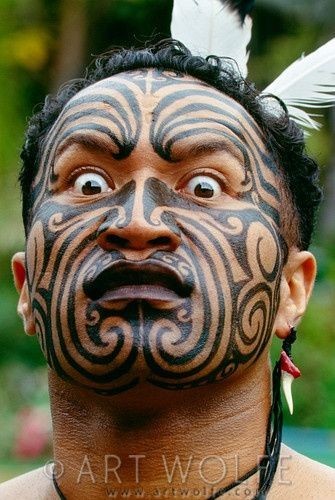
Origins of Moko:
There are many theories as to where moko began. Maori folklore states that moko was introduced when the spirit Niwareka fled to the Underworld after being struck by her husband Chief Mataora. Chief Mataora then followed her into the Underword where he was taught moko by Niwareka’s father, Uetongo. Another theory states that moko began when Maori women would cut themselves with shells or obsidian during mourning rituals and then fill their wounds with soot (Heritage Te Manatu Taonga). Yet a different theory proposes that moko began when lighter skin chiefs would tattoo their faces to blend in with their darker skinned slaves in battle and be less of a target. Finally, it’s possible that moko was used as a way to create permanent war paint to avoid the hassle of recreating it before each battle. No matter where it started, there’s no arguing that moko evolved into a beautiful art form and a critical part of Maori identity (Robley).
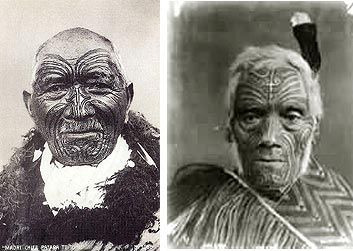
Moko as Strength:
A large part of the reason why moko holds such great cultural significance is because its process is a painful one that requires the strength of the wearer. Moko is created by tying chisels made of bone (called “uhi) to a handle that is then tapped into the skin with a mallet. After the wound is created ink made from charcoal and liquids from plants is deposited into it, resulting in a thick raised line (Heritage Te Manatu Taonga).
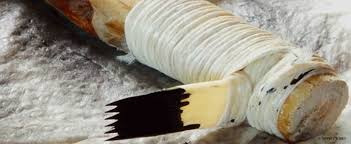
One of the reasons why the process of moko is so painful is because it was often used to represent wounds received in battle and so moko is meant to reflect that. Additionally, this function emphasizes strength as the user had the physical strength to endure battle but also the strength to support and sacrifice for their community. Another reason moko is known for being one of the more painful tattoo practices is because designs were tightly packed together and often covered most of the face, including the eyelids. The biggest thing that differentiates moko for Maori men and women is the size. Men often wore full body moko whereas women wore moko kauae, a smaller chin tattoo. This size difference along with the connotation of strength and moko emphasizes the sexist belief of a man’s strength over a woman’s in Maori society.

Moko as Art and Culture:
Moko designs were intricate combinations of spiral patterna and black-out design that covered the thighs, butt, stomach and face. Designs were similar to family crests in that certain patterns could only be used by certain families. Facial moko was the most valued as the face was the most sacred part of the body and a declaration of identity. In wearing facial moko, one was expressing great cultural pride (Robley). Another reason why moko was a source of cultural pride was because it was believed that the receiver visited the spiritual realm, met their ancestors, then returned as a new person (Heritage Te Manatu Taonga).
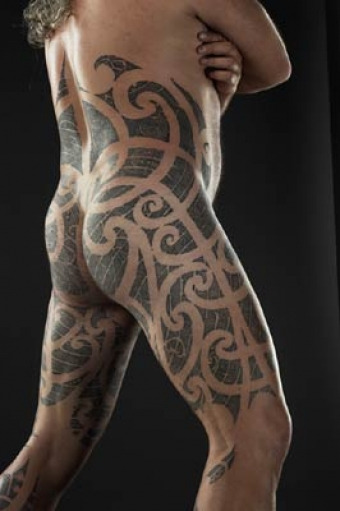
Moko was further solidified as a cultural identifier of the Maori people with the start of colonization. Because moko was such a great source of pride, most memorized their moko designs. And so when European colonizers requested the signatures of the Maori for documents, they would often recreate the pattern of their facial moko as their signature. Furthermore, moko was used to represent the Maori in messages. Chiefs would often communicate by sending symbolic items rather than written messages and so items with moko drawn onto them were used to represent the Maori people. For example, if a potato with moko and tobacco was sent from one Maori chief to another it meant it was an invitation to join a war party against a Maori enemy. The tobacco being represntative of an invitation to war, the potato signifier the enemy, and the tattooing or lack of being represntative of a Maori or European enemy (Robley).
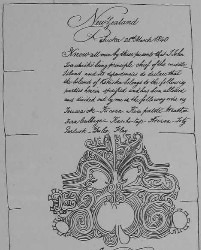
Moko Kauae:
While full body moko was worn mostly by men, moko kauae was still a source of pride for women. Moko Kauae is a chin tattoo representative of the coming of age of a Maori woman. It’s believed that the women wear their moko close to their hearts which is then brought to the surface by a moko artist when the women are ready. Similar to the large scale moko of Maori men, moko kauae is meant to display one’s inner strength although the smaller nature of moko kauae conveys the underlying belief that a woman’s strength is more subtle and less physical. Additionally, the process is associated with a coming of age devoid of battle wounds further emphasizing the belief that a woman’s value was not her strength.
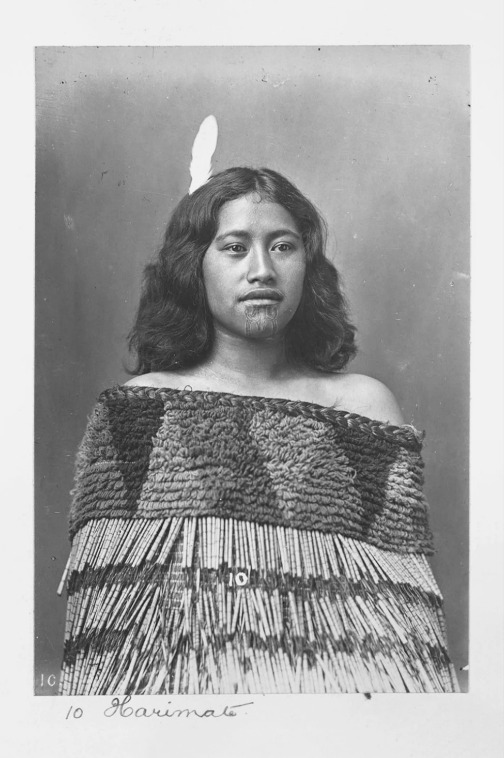
Suppression and Resurgence:
Beginning around 1840 British colonization of New Zealand began. They forced the Maori people from their land and to assimilate to British culture. During this time laws prevented the growth and spread of Maori culture, including moko (Duff). However, while the spread of moko was discouraged it was still recognized by the British as a beautiful and exotic art form and so heads tattooed with moko were often sold as souveniers and collector’s items. They became so popular that Maori were often killed specifically for their tattooed heads and the Maori people themselves would sometimes tattoo the heads of their slaves, kill them, and sell their heads (Heritage Te Manatu Taonga). Because of fear of death or persecution, moko began to die out and by 1970’s it was only seen on female elders and disaffected urban Maori people. Gang members would use moko as gang signs and it became correlated with gangs and crime. Because of colonization, this beautiful art form was twisted into something viewed as dirty and corrupt.
A revival of Maori culture began in the 1980’s with many people reclaiming moko as a cultural identifier. In particular, there’s been a surge of women reclaiming moko kauae. They’ve begun incorporating the carving designs of their tribe that survived cultural genocide and getting moko done with traditional tools rather than western ones as a way to connect with Maori culture. In 2016, Nanai Mahuta became the first member of parliament to wear moko kauae. In 2019, Oriini Kaipara became the first mainstream new anchor to wear moko kauae.
The use of moko kauae by these two prominent women who hold positions of power illustrate the gradual respect and acceptance of Maori culture in New Zealand. While cultural genocide seemed to work during the era of colonization, the unstoppable power of moko is allowing it to resurge (Duff).
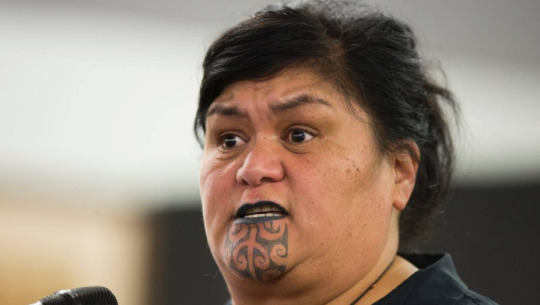

Deter-Wolf, Aaron. “Archaeological Evidence in Polynesia and Micronesia.” Ancient Ink: The Archaeology of Tattooing, edited by Lars Krutak, University of Washington Press, 2017, pp. 159–164.
Duff, Michelle. “'It's Transformative': Māori Women Talk About Their Sacred Chin Tattoos.” Vice, 13 Sept. 2016.
Heritage Te Manatu Taonga. “Tā Moko – Māori Tattooing.” Te Ara Encyclopedia of New Zealand – Te Ara Encyclopedia of New Zealand, Ministry for Culture and Heritage Te Manatu Taonga, 20 Dec. 2016.
Robley, Major-General. “Moko; or Maori Tattooing.” New Zealand Electronic Text Collection, 2016.
2 notes
·
View notes
Text
How to Make Tattoo Ink at Home and Then Not Use it On Yourself Because That Would Be Bad
Black tattoo ink can be made easily by burning a petroleum product, and collecting the ashes, item such as plastic game pieces, paper towels soaked in baby oil, or plastic bottle would all be effective for this, the items can be set on fire using a lighter, and the soot can be collected on any surface. Common ways of collecting the soot are by burning the items inside of paper bags, using printer paper, or on the inside of a bowl. The soot can then be scraped into a vessel for mixing such as the bottom of a soda can, a binder should then be added along with water this will allow more ink to stick to the needle, and will also suspend the particles in the mixture and prevent them from settling as they would with only water.

America, Hidden, director. Hidden In America | Prison Ink | Documentary. Prison Ink, Beyond Distribution , 4 Apr. 2016, www.youtube.com/watch?time_continue=3&v=aTdSd0VK0hE&feature=emb_logo.
0 notes
Text
How to Make a Tattoo Machine, for Educational Purposes
Materials
1. A small electric motor, obtained from an electric toothbrush, shaver, or other electronic device
2. A ballpoint pen or mechanical pencil
3. A sharp object, ideally a guitar string
4. a plastic rod such as a toothbrush or handle from a disposable razor
5. duct tape
6. a lighter or similar heat source
7. small plastic piece from the electronic device that the motor was removed from
8. power source, most likely a battery with wire taped to it
The first step in making your tattoo gun will be bending the plastic rod into an L shaped piece that will become the body of your tattoo gun, variations of this are shown below using a disposable razor and toothbrush. The next step will be to create the tube structure, to do this you will need to remove the ball from your ballpoint pen. This can be achieved by using pliers or by trying to push it out using a needle. This step can be circumvented by using a mechanical pencil, the end opposite of the tip should be cut off so that the entire piece is about 2 inches long. This should then be attached to the body of the gun using duct tape. The next step will be to attach the small plastic piece from the device to the motor, a small hole can be made in this by heating up your needle using the lighter, and pushing it into the plastic piece, after this is done the end of the motor can be pushed onto the plastic piece, this piece will be connected to the needle later. After this is completed you can mount the motor onto the body of the tattoo machine as shown below. the main setup of the machine is now completed and the needle can be made, you can do this by pulling a guitar string taught and holding a lighter under it, when the wire snaps it will create two sharp points which will become the tip of the tattoo needle. This piece can then be bent at a 90-degree angle at about 2 and ½ inches, using pliers this can be heated and inserted into the plastic piece on the motor as shown below. your tattoo machine should now be functional, you can power it using a 9v battery and wire.
(Jaafari)

0 notes